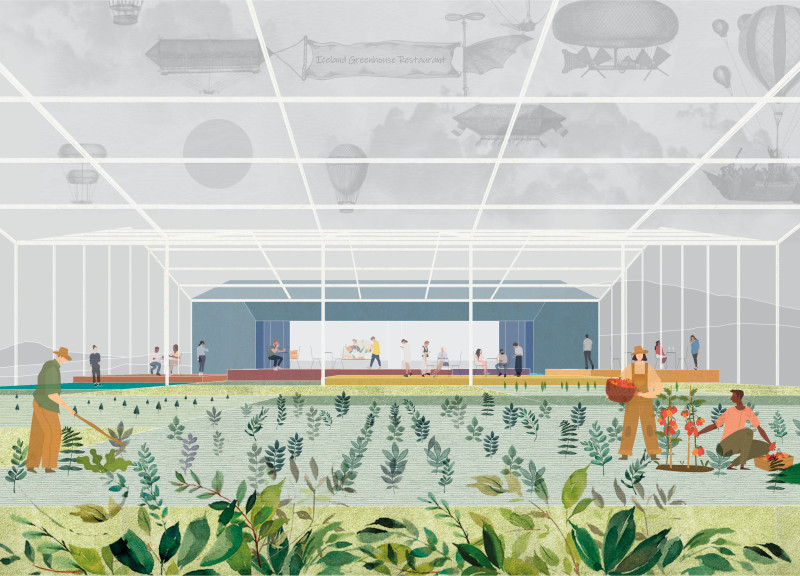5 key facts about this project
The Iceland Greenhouse Restaurant is located near Hverfjall volcano in Mývatn, Iceland. This area is known for its remarkable natural landscape, which makes it a fitting location for a restaurant. The design focuses on the idea of a greenhouse, allowing visitors to see how their food is grown while enjoying the beautiful views of the surrounding scenery. The building’s long shape is positioned to face the volcano, creating a direct connection between the restaurant and this striking landmark.
Design Structure
The layout includes five modular sections, each measuring 20 by 20 meters. The first two modules are solid, housing essential services such as the kitchen, staff changing areas, storage, and restrooms. This arrangement keeps everything needed for efficient operation in one space, making it easier for staff to manage the required services.
Open Spaces
The other three modules are designed to be transparent, which allows ample natural light inside and grants views of the outside environment. The kitchen is placed behind a large window, giving diners a view of the cooking process. This transparent design encourages a connection between the dining experience and the kitchen, enhancing the overall experience of eating out.
Engaging Dining
Dining areas are designed on different levels and are integrated with spaces for growing vegetables. This setup encourages a farm-to-table concept, where diners can see the food growing while enjoying their meal. The layout promotes interaction between guests and the garden, allowing customers to better appreciate the fresh ingredients used in their dishes.
Color and Mood
One unique aspect of the restaurant is its colorful floor design. The flooring features a range of colors that shift from greens representing the surrounding plants to deep blues like the nearby lakes. This careful choice of colors helps create a warm atmosphere inside and strengthens the relationship between the building and its natural surroundings. The overall design encourages visitors to feel that their dining experience is connected to the rich landscape of Iceland.






















































